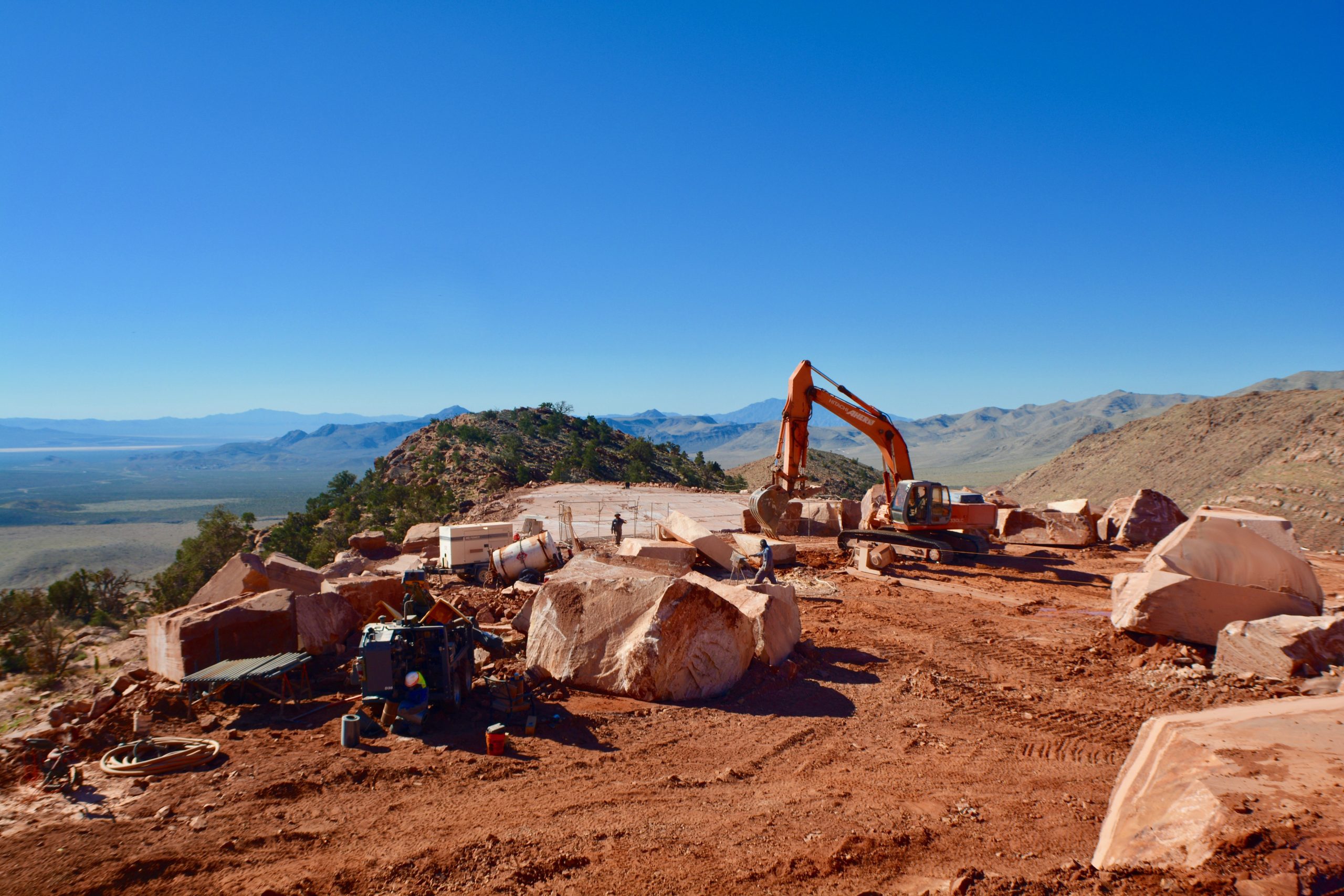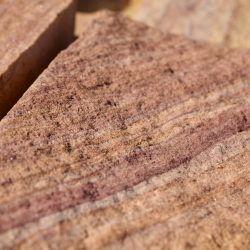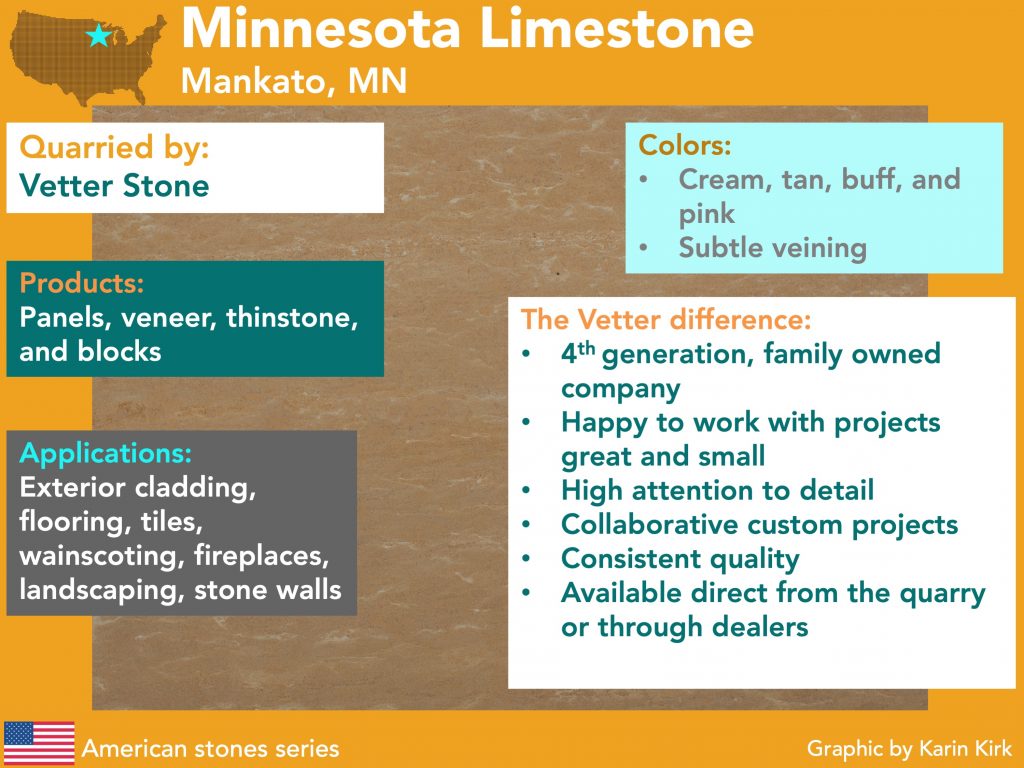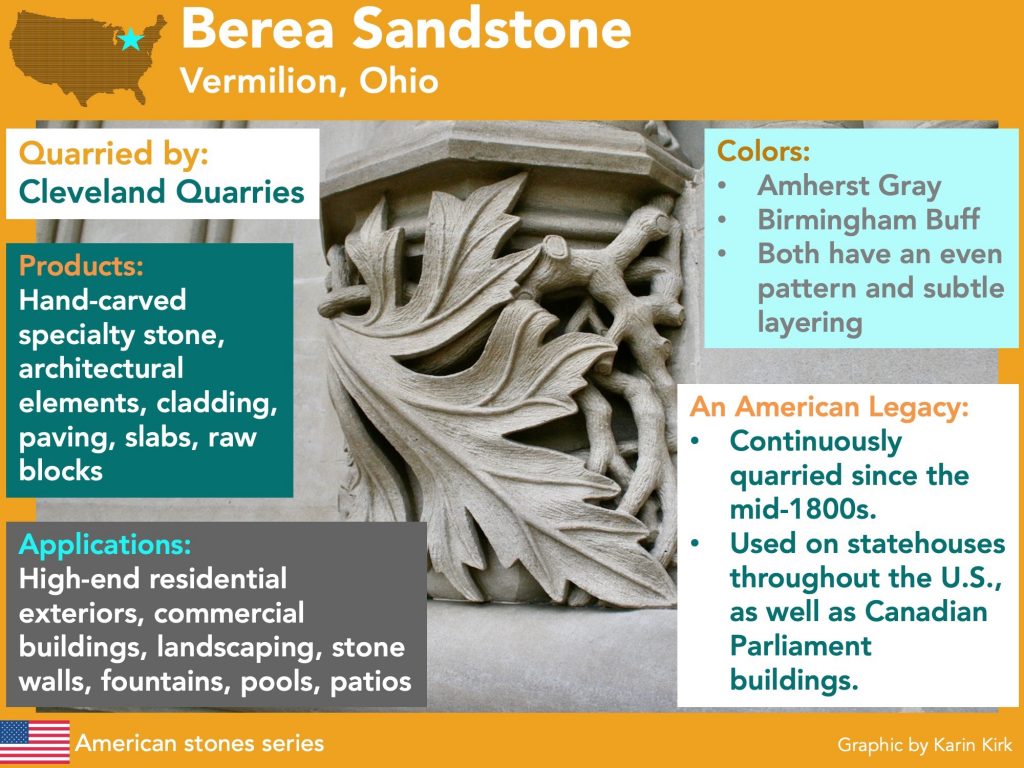Las Vegas Rock: A Rainbow in the Desert
Note: This article is part of a series about American quarries. If you work for a quarry that’s a member of the Natural Stone Institute and you’d like your quarry to be featured here, contact Amy Oakley. Thank you!
Type of stone: Sandstone
Quarried from: Goodsprings, Nevada
Las Vegas isn’t known for its subtlety. But just beyond a city defined by glitz and sparkle, one can experience a whole other color spectrum—one dictated by nature rather than neon lights. The desert offers a dramatic interplay of hues and textures, as canyons and cliffs in shades of russet, mahogany, and bronze echo across the landscape. These iconic rocks are ancient sand dunes that have become frozen in time; a vast deposit of richly-colored stone that has a myriad of uses. 
Sweeping Sandstone
The American Southwest is currently a desert, but in the Jurassic Period, it was an even more inhospitable place. A huge area of windblown sand dunes stretched across hundreds of desolate miles, similar to the Sahara Desert today.
Wind makes an especially beautiful signature in the rocks it creates. Coaxed by the persistent breeze, sand grains pile up into ripples and dunes. Over time, dunes migrate and shift, stacking new layers on top of older ones. Older layers are buried and bathed in silica-rich groundwater, which binds the sand grains tightly together, yielding a solid, dense rock.
The layers inside sand dunes are made up of graceful curves that are only visible once erosion – or a quarry saw – cuts open the deposit to reveal the beauty within.
Las Vegas Rocks quarries into a layer called the Aztec Sandstone. The stone is 180 to 190 million years old, and it formed as dinosaurs were wandering the region. The Aztec Sandstone is the same rock as the famed Navajo Sandstone that defines beloved landscapes such as the massive cliffs of Zion National Park, the deep canyons of Canyonlands, and the iconic stone arches of Arches National Park.
“A world away” from Vegas Strip to High Desert
The quarries of Las Vegas Rock sit about an hour’s drive southwest of Las Vegas. Following a dirt road north from the tiny settlement of Goodsprings, the road enters a narrow valley flanked by ridges of desert sandstone. “It feels a world away when you’re up at the quarry,” says Jeremy Adams, CEO of Las Vegas Rock.
Atop a rocky knob, the quarry opens up layers of brilliant rock which have been nicknamed Rainbow Quarries. The region was once home to 17 different quarrying sites which produced more than 20 different colors of stone.
The original quarry was started in the 1940s by a Syrian immigrant named Peter “Pop” Simon. The colorful sandstone was used in enigmatic Las Vegas buildings such as the original Flamingo Hotel, the Desert Inn, and the Thunderbird Hotel. As development boomed, use of the stone expanded beyond the local market and found its way to primetime architecture in Los Angeles, Hollywood, Carmel-by-the-Sea, and Honolulu.
The quarry went dormant in the 1980s, and was reborn in 1991 as Las Vegas Rock, Inc.
One of the original goals of the new operation was to produce landscaping rock that could help local residents adopt drought-tolerant outdoor environments that are evocative of the desert region, rather than thirsty lawns and lush plantings. The palette of vibrant red, orange, purple, and rich brown evoke a natural, native feel that connects the human-built environment to the natural one.
A Rainbow of Color Options
The presence of several colorful layers of sandstone allows for multiple products from a single operation. Stone is produced in three different palettes.
- Sierra Smoke is a red color range, including burgundy, pink, and purple, with some yellow and white.
- Tupelo Honey covers the golden end of the spectrum. This blend contains yellow, tan, camel, and mustard with some pink, purple, white, and brown.
- Desert Blend offers the full spectrum of colors produced by the quarry. It’s a lively blend of browns, oranges, reds, burgundies, yellows, and more.
In addition to the colors, the stone has beautiful layered patterns formed by windblown sand. They layers can be horizontal, diagonal, or curving – or sometimes all three in a single piece. The intricate patterns make the stone much more expressive than a typical sandstone, appealing to those who seek a one-of-a-kind aesthetic.
Customers are invited to visit the quarry and select their blocks. Adams notes that people enjoy the hands-on, personal process, like the “farm to table” concept, but with natural stone.
The World’s Only Cradle to Cradle Certified Stone
Las Vegas Rock is the only Cradle to Cradle (C2C) certified stone to date, and the company obtained the certification in 2007. Some of the forward-thinking attributes of the operation are their use of environmentally safe and healthy materials, the use of renewable energy, efficient use of water, and strategies for social responsibility. Impressively, the company’s stone production generates zero waste, as everything that’s extracted is put to good use, from massive blocks down to pure sand.
Up to 10 LEED points are possible with the use of Las Vegas Rock, and the company intends to pursue the Natural Stone Institute’s sustainability certification in the coming year.
American Values
Adams exudes enthusiasm for his work and has a clear-eyed vision for the strengths of his company. “What customers love about our stone and our company is first that we are easy to deal with,” he says. “We are easygoing people and are looking to help and provide solutions.”
“Being an American quarry in the southwest is appealing for most people, but not for all,” explains Adams. “For the customers that are price conscious, the appeal of American is not the deciding factor, price is. Being an American quarry with American labor and wages is tough trying to compete internationally. The projects that come to fruition are the ones that value the American-made aspect and our unique natural stone.”
Adams is excited for the growth of both the company and its people. “I like to train and educate people about stone and all the possibilities,” he says. Despite the challenges of a tough industry, Adams is undaunted.
“The strength of the stone industry and the strength of our company is the same, and that is in its diversity,” he says. “There is a seat at the table for all of us.”






















